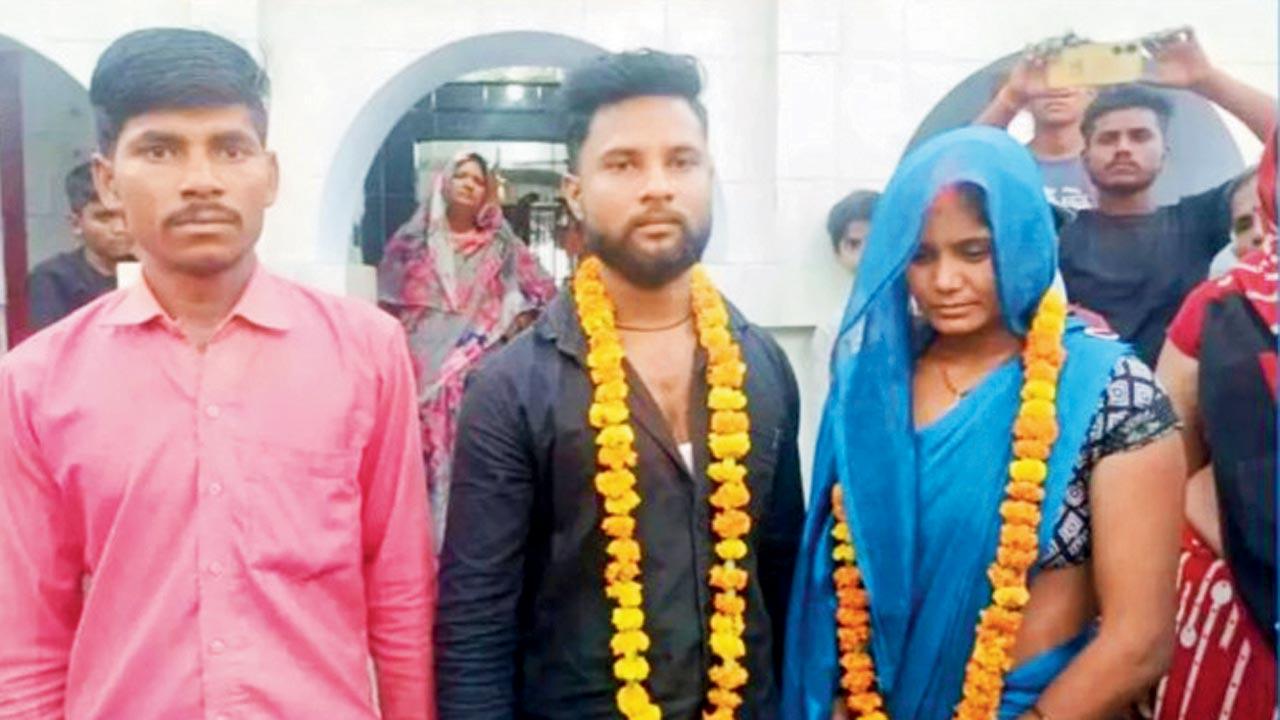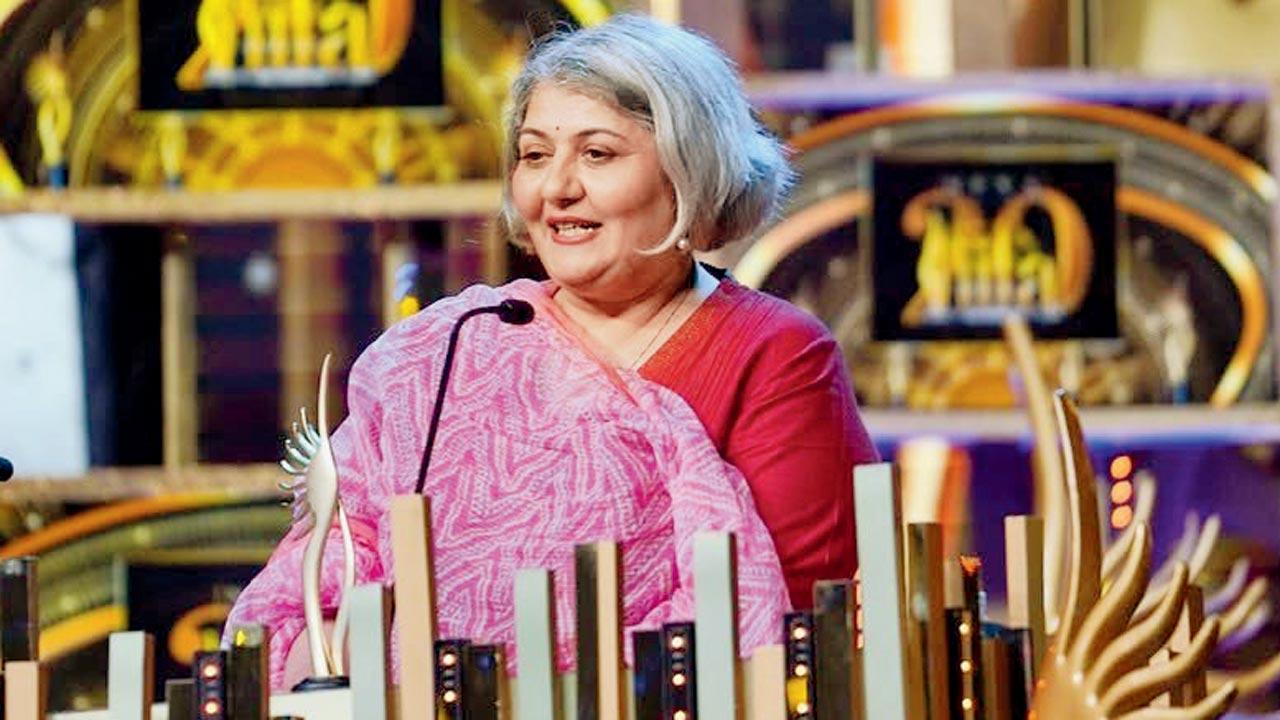In the last year, there have been at least a dozen cases dealing with women killing their partners. The reason is complicated and entrenched in a judgmental society

The prime accused in the Meerut murder case, Sahil Shukla and Muskan Rastogi, were seen playing Holi after allegedly murdering merchant navy officer Saurabh Rajput on March 4
Crime records are rife with cases of men killing their partners. But sometimes, violence flows the other way around.
The most recent example in the city came from Goregaon East on March 15, when Chandrashekhar Chauhan was found dead at his home. When the police arrived, his wife Ranju told them he was fine when he went to bed, but did not wake up the next morning.
However, the police found holes in Ranju’s story and it turned out that she had allegedly conspired with her lover and two others to strangle Chauhan to death.
At least a dozen such cases have been reported in the past year. Women who may not actually harm their husbands are still threatening to kill them. Like in Uttar Pradesh’s Gonda district on March 31, where a woman allegedly threatened her husband, claiming she would chop him up and pack him in a drum like the Meerut case. The national shocker from Meerut occurred on March 4, when Muskan Rastogi, along with her lover Sahil Shukla, is reported to have brutally killed her husband, Saurabh Rajput, dismembered his body and disposed of the remains in a drum packed with cement.

Last week, on April 20, another shocker came from Bengaluru where former Karnataka State Police Chief, Om Prakash, 68, was found murdered at his residence, with the key suspect being his wife, who allegedly stabbed him ten times in in his abdomen, chest and hands.
One might ask what’s making women carry out such brutal murders of their partners? Statistics say such instances are relatively rare. Renowned criminologist P Madhava Somasundaram—Professor of criminology and chairman of the Indian Society of Criminology—told Sunday mid-day that only around five per cent of crimes in India are committed by women. Globally, the trend is even more niche. He says, “Literature from criminology and sociology from the last 300 years suggests that women commit just two per cent of crimes worldwide.”
Yet, Somasundaram explains that this statistic may be skewed. It’s because though women may be directly involved in plotting murders, they often don’t carry out the killings themselves. This is why such crimes are underrepresented in government data.
 P Madhava Somasundaram; Manish Pachouly and Vivek Agrawal
P Madhava Somasundaram; Manish Pachouly and Vivek Agrawal
Regardless, he states, “When women do resort to committing a crime, it is often of the most heinous and complex nature.”
Dr Shailesh Umate, consultant psychiatrist at Fortis Hospitals, explains that such acts may be preceded by prolonged abuse, trauma, or extreme emotional distress. “These experiences can drive women to commit deeply calculated and deliberate crimes, rather than impulsive ones, making their actions all the more intense,” says Dr Umate.
The cases mentioned above also share a common pattern—a paramour or other accomplices are often involved, as noted by experts and investigating officers alike.
 Pic/iStock
Pic/iStock
A serving Mumbai Police inspector who has probed such cases, spoke to us on condition of anonymity, echoing what Somasundaram said. “It’s true that women rarely commit murders themselves. In 99 per cent of cases, even if a woman attacks a man, she is likely to be overpowered. Unless she has a deadly weapon, such as a firearm, or attacks a man while he’s asleep, or attacks from behind, the chances of inflicting a fatal wound in one go are extremely rare,” he says.
The officer said he has come across failed murder attempts by women, too, which often result in more severe assaults against women themselves. “Chances of a backfire are high if she is unable to kill,” he says.
But why do women, who rarely commit such crimes, choose to do so? We spoke to experts, and our in-house crime reporters, who have covered dozens of such cases over the years.
 A man called Babloo in Uttar Pradesh’s Sant Kabir Nagar district decided to marry off his wife to her lover after getting to know about their affair, fearing his wife may get him killed. Pic/X @imajay8177
A man called Babloo in Uttar Pradesh’s Sant Kabir Nagar district decided to marry off his wife to her lover after getting to know about their affair, fearing his wife may get him killed. Pic/X @imajay8177
The top reason cited by experts across professions—including lawyers, police, and criminologists—was extramarital affairs or a lack of intimacy in relationships. This goes both ways—either the woman’s relationships with other men or the man’s affair with other women.
After the Supreme Court struck down Section 497 of the Indian Penal Code, which criminalised adultery, our reporters observed a seeming rise in cases where lovers are involved in murder. This observation somewhat aligns with findings from a 2020 survey by Gleeden, an extramarital dating app, which revealed that approximately 55 per cent of married Indians admitted to infidelity at least once, with women accounting for a little over half of these cases—56 per cent.
While extramarital affairs may be a primary factor, they escalate to murder when women are driven to an extreme. Comparing women’s criminal tendencies with men’s, a reporter asked, “Have you heard of a woman snatching a chain like male criminals do?” adding, “Even if she does so, chances are that she did it for a struggling family or to look after her children, unlike male criminals, who do it out of notorious mindset for quick money.”
Experts also noted that men generally commit crimes for sexual gratification, societal notions of masculinity, money, property, dominance, or rage. Women, on the other hand, said Somasundaram, “do so to avoid the societal stigma that arises if an illicit relationship is exposed.”
As per experts, other significant reasons why women kill their partners include financial independence, psychological disorders, the influence of black magic/superstition/cults or self-defence turning into overkill—though these reasons are extremely rare, and adultery and lack of intimacy seemingly remain the top cause.
Senior crime reporter and author of the book The Sheena Bora Case, Manish Pachouly, categorises the killings into two types: those driven by premeditated criminal psychology, and those resulting from impulsive reactions. The latter, he says, is rare. “Understanding criminal psychology is important. It’s not easy for anyone with a normal psyche to commit murder or even assault someone,” he says.
Pachouly adds that such psychology can manifest in anyone, regardless of gender or upbringing. However, there may be multitudes to this. Dr Umate says it stems from a combination of personality development and environmental influences. “For anyone who commits violent crimes, prolonged exposure to aggression or a violent upbringing can play a significant role. It holds true for women, too,” he says.
A key factor in this psyche is the presence of antisocial personality traits. “The defining feature is often a lack of remorse,” Dr Umate notes. “These individuals don’t feel guilt for their actions, which makes rehabilitation incredibly difficult.” This trait was particularly evident in the recent Meerut murder case, where the accused celebrated Holi and attended parties shortly after committing the crime.
However, if a person shows even a slight capacity for remorse, there may be hope.
Another senior crime reporter from Mumbai, who has covered the underworld and murders for over three decades and has authored over a dozen crime genre books, Vivek Agrawal, believes that the violent content we consume also contributes to shaping one’s behaviour. “The easy accessibility to all types of content has blurred the lines between real and reel life. People, including women, are increasingly consuming content that makes them think they can escape the consequences of their actions. Exposure to such content also makes people get into impulsive relationships, which can lead to crimes like these,” he says.
Agrawal says every individual has latent criminal tendencies, which are kept in check by societal conditioning. “‘Sanskaar’ plays a big role, and the kind of people you are surrounded by. Yet when exposed to triggers, like situational pressures, or even disturbing content, these restrained impulses can erupt,” he explains.
From the perspective of the criminal justice system, the police officer we spoke to offered an intriguing observation. He said lovers often manipulate women into committing crimes against their husbands, possibly with the intent of acquiring property in the husband’s name. He explains, “Since the woman may not meet the lover frequently and could be feeling dissatisfaction in her marriage for various reasons, the initial phase of the new relationship might seem exciting and refreshing. This sense of a ‘new spark’ is sometimes exploited by the lover to influence her decisions. However, even such relationships are likely to lose their spark eventually.”
Former Director General of Police D Sivanandan, who has handled such cases, states that irrespective of these factors, the law views men and women as equals, and the investigation process remains the same for both.
While the law may treat men and women as equals, there can be instances where individuals within the system may exhibit bias. Somasundaram talks about the concept of “masked behaviour”, where caregiving professionals, such as nurses or teachers, can obscure criminal activity. “For instance, if a male teacher takes a few girls to a neighbouring district without informing the school, it is viewed negatively. However, if a female teacher takes three boys under similar circumstances, it is often seen as a positive effort to expose students to new experiences,” he explains.
When cases involving women progress through the criminal justice system, Somasundaram notes that women are not always seen as individuals but are also viewed through the lens of their roles as homemakers. “Male investigation officers, magistrates, or judges often have a cognitive map shaped by patriarchy. They consider the woman’s family and children, which influences their decisions in ways that wouldn’t apply to a man,” he says.
This patriarchal bias may lead the system to shield women from the criminal justice process. “There are fewer women in jail because the system tends to keep them away from it,” Somasundaram points out.
However, lawyers Rameena Bala and Sanjana J Satish asserted that at least in High Courts, judges do not discriminate, and the idea of police showing leniency to a woman accused is far-fetched.
23,772
No of female prisoners out of total 5,73,220 in India
*Source: NCRB, 2022 data
 Aishwarya Singh
Aishwarya Singh
Women face scrutiny because of their gender…
“For women, violence is often linked to feelings of helplessness, lack of resources, societal stigma, or undiagnosed mental health issues,” says Aishwarya Singh, Co-founder of Desi Crime Podcast. “They may perceive violence as the only escape from unhappy or abusive relationships, though alternatives exist. Also, in terms of societal reactions, women committing crimes face greater scrutiny tied to their gender roles, with a focus often shifting to their identity and behaviours, such as appearance and lifestyle choices. This contrasts with men, whose crimes are typically analysed without emphasis on personal traits,” she adds.
 Pooja Ladha Surti
Pooja Ladha Surti
The screen sheen
Pooja Ladha Surti, film editor and screenwriter, has written films like Andhadhun, Badlapur, Ek Hasina Thi, Phobia and Agent Vinod, says, “While writing Ek Hasina Thi, which is about a middle-class young woman who finds herself in jail for no fault of hers, Ram Gopal Varma introduced me to a woman who was an undertrial, lodged at Arthur Road prison. She was accused of having killed a vegetable vendor with a gupti knife, allegedly to avenge her disabled husband’s murder. She said to me, ‘Abhi terese kya chhupaaun, main maari usko.’ This was a battle-hardened woman living below the poverty line—and with a small child to boot, who also was living in prison with her. For me, she was a revelation about the lives of people who are not privileged. No matter how realistic the portrayal, when we write characters for movies, we tend to glamourise their pains and passions, and in doing so, perhaps we blunt the edge of real-life violence.”
 Subscribe today by clicking the link and stay updated with the latest news!" Click here!
Subscribe today by clicking the link and stay updated with the latest news!" Click here!








